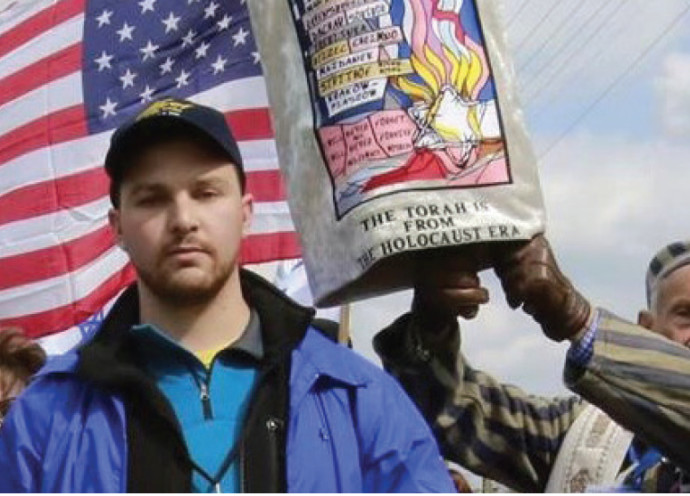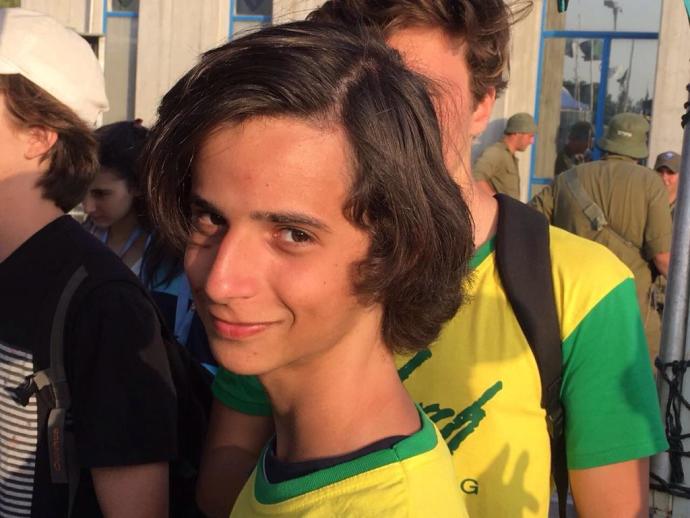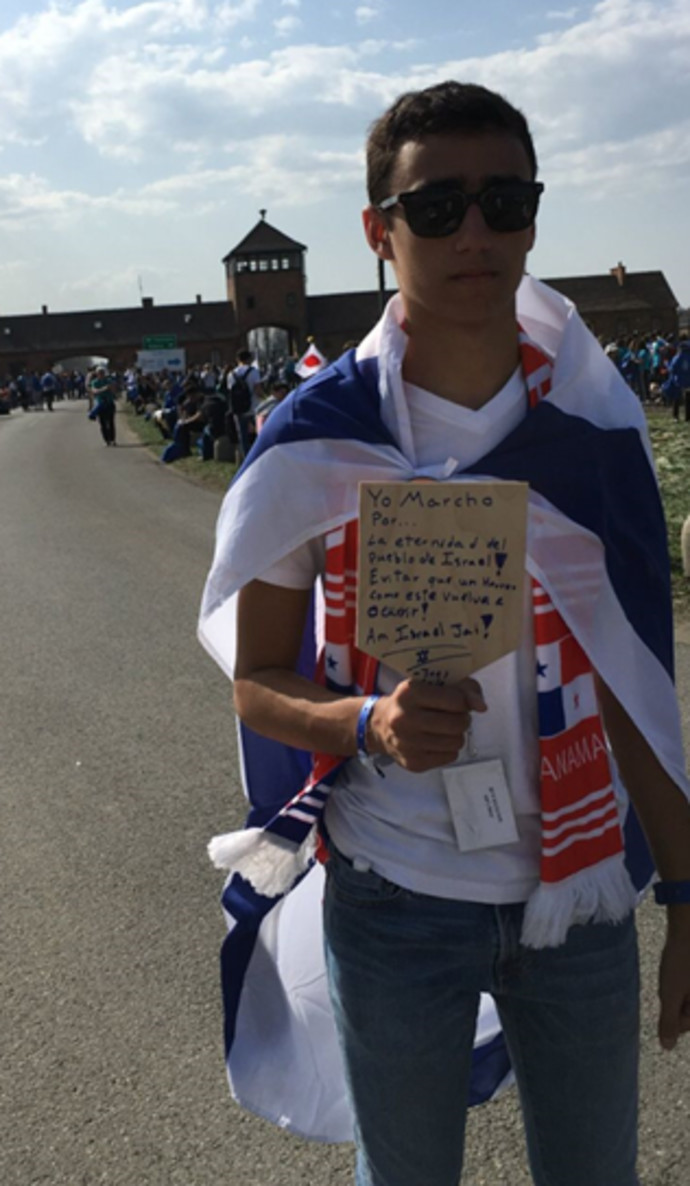Alexander Levine
USA
'The March of the Living can transform a portion of history from a textbook and allow a person to see man’s inhumanity to man.'

I went on the March of the Living in 1999, 2009 and 2018 with the NJ/NY/PA/NE delegations.
I was seven years old when I attended my first March of the Living, and my grandparents, Cecile & Ed Mosberg, wanted to take our family to Poland to see our history. I do not remember many details of the trip due to my age and the fact that my parents shielded me from most of the camps. I remember that my grandmother was adamant that she march from Auschwitz I to Auschwitz II, since she did it every day while she was a prisoner there. She grabbed my hand and my older sister’s hand and started to walk after saying this.
Ten years later, in 2009, I returned to the March as a senior in high school. My grandparents were rescuing Torah scrolls, and I had the opportunity to help rescue a Torah on that March of the Living from Poland and bring it to Yad Vashem to be used in the synagogue. Weeks after bringing this Torah, Pope Benedict XVI came to Yad Vashem to meet a group of survivors, including my grandfather, and to see the Yad Vashem museum, which included that specific Torah scroll.
I was in a group of over one hundred marchers. We went to multiple camps and ghettos in Poland and a forest where Nazis massacred an entire town of Jews. After going to Poland, we continued to Israel to learn about the founding of the Jewish State, as well as the impact of the Holocaust on the State of Israel. In 2018 I returned for a third time as a chaperone for the March.
Each March of the Living is a different experience, and a different moment from each event stands out. In 2018, a fire broke out at a factory near Auschwitz. Smoke was billowing above the camps, and I pointed it out to the students and said, “We can see the smoke from here just like the Poles could see the smoke from the crematoriums outside the fences. Don’t accept their claim that they didn’t know.”
I have always considered Holocaust education and Judaism to be important parts of my life. The March of the Living helped develop this even further. Since going on the March, I have taken courses to become certified to speak about the Holocaust in classrooms. I feel that hearing from a direct descendant, closer in age than a survivor or a second-generation survivor, makes a greater impact on young people about something that happened more than 80 years ago.
The March of the Living can transform a portion of history from a textbook and allow a person to see man’s inhumanity to man. It enables a person to see with their own eyes and, in some exhibitions, touch shoes or the bunks in the barracks and conceptualize the magnitude of the Holocaust. It allows future generations who won’t have the privilege of hearing a survivor speak, to see it firsthand. It will also allow people to understand the importance of the State of Israel, the Jewish homeland.
Theodor Fuchs
BRAZIL
'In Poland, we witnessed words coming straight out of the pages of history books. We no longer read. We saw. We lived.'

In Poland, we witnessed words coming straight out of the pages of history books. We no longer read. We saw. We lived.
My name is Theodor Fuchs. In 2016, I had the privilege of embarking on a journey whose effects were hardly imaginable at the time. Unlike the books we read, we were, at last, feeling the Shoah in the first person. The cold. The ghettos. The forests. The cemeteries. Auschwitz-Birkenau, Majdanek, Treblinka. In Poland, we witnessed words coming straight out of the pages of history books, taking shape, growing legs and hands and embracing us completely. There, we were surrounded by the atrocities. We were enveloped by all that well-known, irreversibly released energy that one couldn’t help but feel. We were surrounded by the excruciating past of our ancestors. It was clear, however, that going through that experience, of seeing it with our own eyes, was as painful as it was necessary. The fact we were there firsthand, crystallized in our souls in a peculiar way. There was a personal touch. We no longer read. We saw. We lived.
In Israel, we felt a shocking contrast. We traced a journey from our ancestry in Judea to the current times. Once again, we learned about the past. However, unlike Poland, we did so from a lens situated in the present. We looked around and saw Jewish life pulsating through the air. We understood, this time accompanied by immense happiness, the crystal-clear necessity of a home among nations to call our own – the State of Israel, in the Land of Israel.
A few months after this intense contact with my identity, together with my friend Gabriel, I founded the Betar Jewish Zionist youth movement in Rio de Janeiro. The first time I had heard about it, coincidentally, had been in Poland. It was one of the organizations that resisted the Nazis and had some of its greatest members heroically killed in the Warsaw Ghetto Uprising. Two years later, I made aliyah with my family. Today I live in Haifa and am a Biomedical Engineering student at the Technion – Israel Institute of Technology. All of this started because of The March of the Living.
Joey Lalo Zayat
PANAMA
'The March of the living creates a bridge between the past and the future'

The March of the Living was an experience for me. I had never experienced something so powerful and impactful in my life. It is an event so representative of life, survival and Jewish pride.
The most memorable moment for me at the march was turning around the corner and seeing the building of Birkenau for the first time. It was a combined feeling of terror and happiness, weakness and strength. Walking the same path so many people did to die, but surrounded by all my friends and thousands of others, singing at the top of their lungs...
The most significant impact the March of the Living journey had on my life is the appreciation for life, for Jewishness, for my friends and for my family. Just seeing the place where I could have lost everything, had I been born 70 years earlier, made me appreciate them much more.
I think the March of the Living program is important because we cannot let others forget our past, much less forget it ourselves. Only in this way can we prevent it from happening again. That is the mission – to bring young adults to their own past and teach them to remember.
